The British soldier who first recorded Waltzing Matilda
- Published
John Collinson enlisted not long after war broke out in 1914
John Collinson was the first person to record Waltzing Matilda, the unofficial Australian national anthem. But the British soldier's singing talent was only discovered by chance.
The nurses were astonished.
Their patient, who was coming round from an operation and still under the influence of chloroform, had just burst into song.
Collinson was in England recovering from the horror of the Battle of the Somme, where both of his arms had been shattered by shrapnel and bullets.
There was no way he could know it, but his semi-comatose singing had just set the the soldier from Tyneside on the path to stardom.
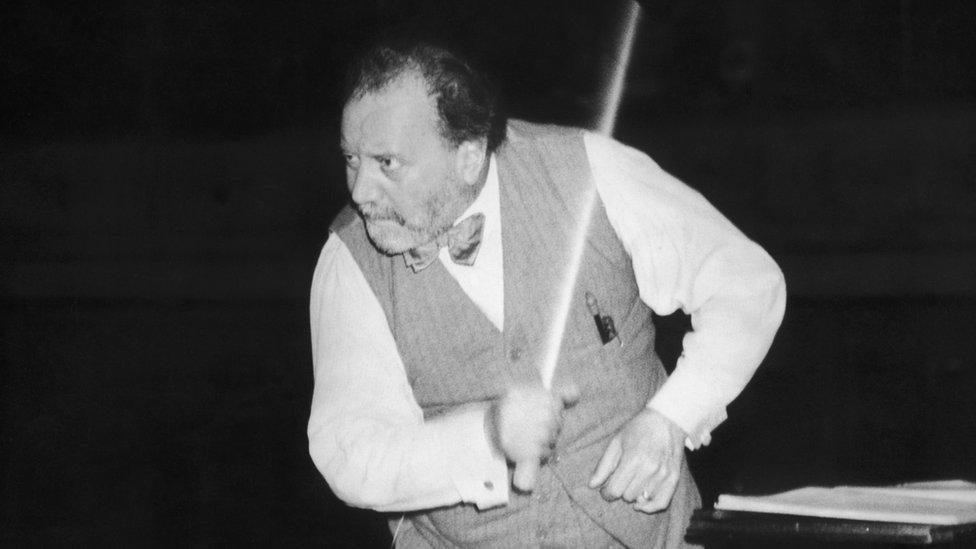
Sir Henry Wood became Collinson's mentor and paid for his music fees
Collinson, whose early life was spent in Wallsend in the shadow of the shipyards, moved from the north-east of England to Australia just as war was breaking out in 1914.
He enlisted in the Australian army at the age of 22 and served in Gallipoli before his unit moved to France.
The soldier was first hospitalised with a thumb injury, but recovered in time to return to the trenches for the Somme - one of the bloodiest battles in history.
Within days he was on his way back to England and a bed at the Australian Auxiliary Hospital in Harefield, Middlesex.
His injuries would cause him to miss the rest of war - but they would also help unearth his hidden talent.
He underwent 27 operations and it was while coming round from one of these that his fine tenor voice was noted.
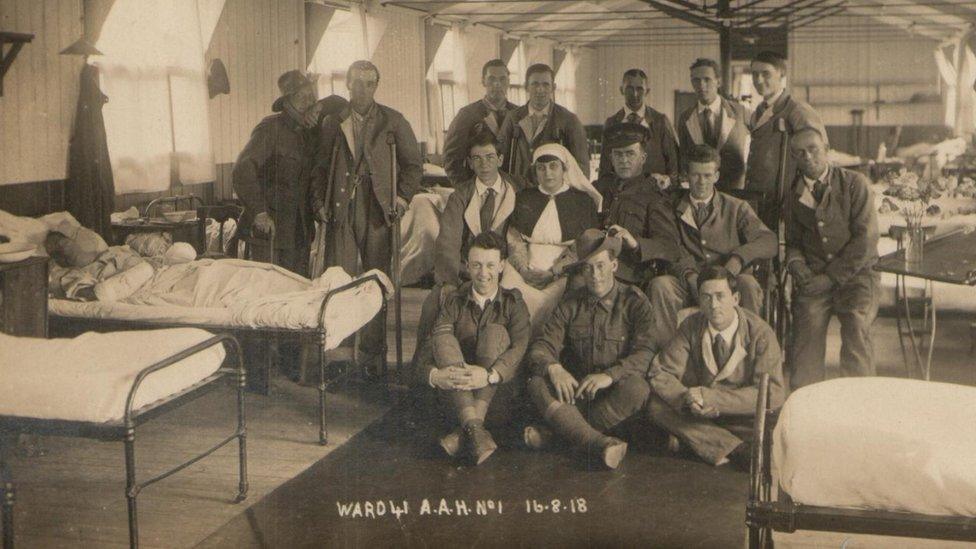
John Collinson (pictured in bed on the left) recovering in hospital
Sleepy and in pain as he was wheeled back to his ward, Collinson let rip.
He was incredulous when the nurses told him he should take part in a hospital concert, and laughed off their suggestion.
But their persistence paid off and perform he did.
Among the audience was one Mrs Farquharson, a society lady from musical circles who would visit the patients.
She recommended Collinson to Sir Henry Wood, the conductor of BBC Proms fame, who in turn was so impressed he made the singing soldier his prodigy.
Upon his discharge from hospital in December 1919, Collinson was dispatched to London's Royal Academy of Music thanks to the support of his conductor patron.
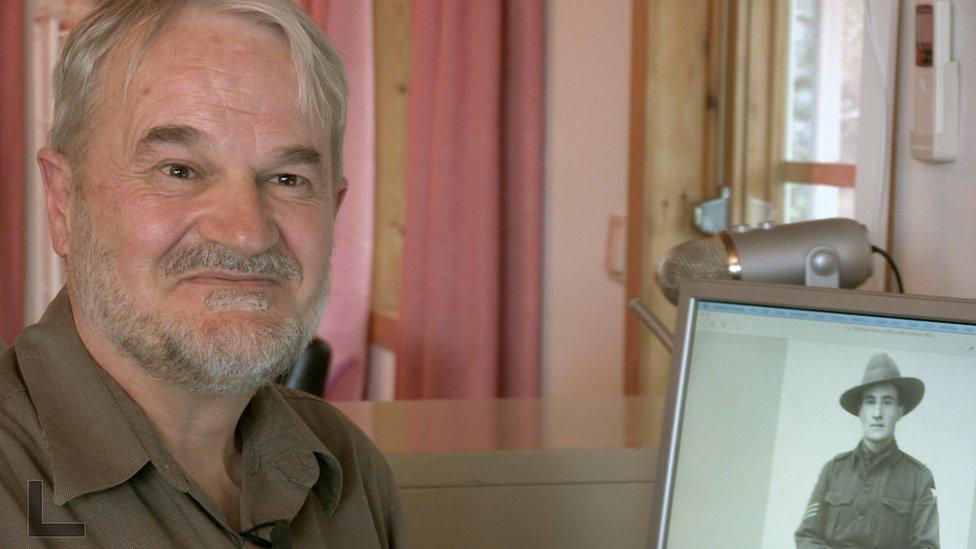
Michael Collinson was told his grandfather John had died from war wounds
"To have someone of that calibre as your guarantor - an eminent conductor - makes us think that Collinson was something really special," said Gabrielle Gale, the academy's museum curator.
And Collinson clearly did not disappoint: in 1919 he won the Rutson Memorial Prize, one of the academy's most prestigious accolades.
With a new home on London's Baker Street, Collinson toured Europe as part of his musical studies.
He began working for the BBC in the early days of radio and would travel the country, singing live as well as working as a singing teacher.
But his most famous achievement was becoming the first person to record Waltzing Matilda, in 1926.
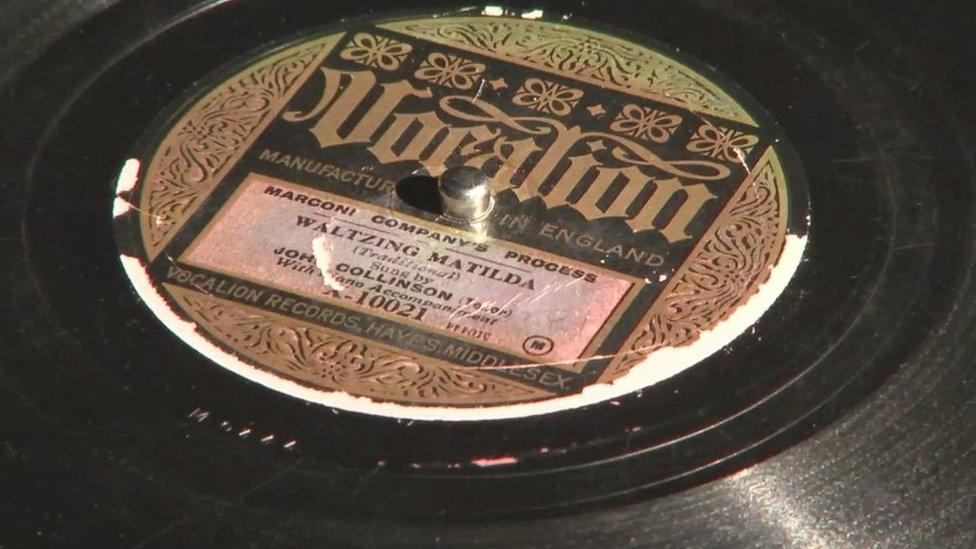
The original recording of the Australian folksong is in the National Film and Sound Archive in Canberra
It was a year after the start of electrical recording, with artists now able to etch their voices into 78rpm discs.
Exactly why Collinson decided to record Waltzing Matilda is not known.
But it was already a popular song and, as an Australian soldier, he would have been very familiar with the emotional bush-ballad which troops often marched along to.
The recording became a prized possession of the National Film and Sound Archive of Australia (NFSA) in 2008.
"This Collinson version marks the turning point when it becomes the quintessential Australian song which tells us about ourselves," senior sound curator Thorsten Kaeding said.
"It is probably, in a cultural sense, the most important song that Australia has produced.
"The very first recording of it is a real find for us.
"It's an enigma - John Collinson from England who has this amazing story that we are only just starting to scratch the surface of."

Waltzing Matilda
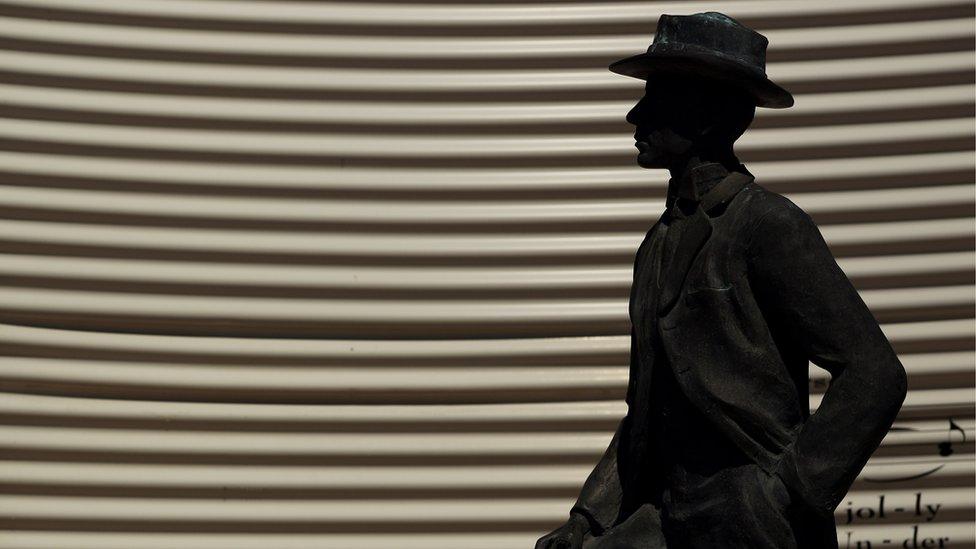
A statue of Banjo Paterson stands outside the Waltzing Matilda Centre in Winton
Australia's unofficial national anthem was already well known before Collinson's recording, having been written in 1895 by the poet Banjo Paterson.
The title was Australian slang for travelling on foot (waltzing) with one's belongings in a "matilda" (swag) slung over one's back.
The song narrates the story of an itinerant worker, or "swagman", making a drink of tea in a "billy" (metal can) at a bush camp and capturing a stray "jumbuck" (sheep) to eat.
When the jumbuck's owner, a "squatter" (landowner), and three mounted policemen pursue the swagman for theft, he declares "you'll never catch me alive" and commits suicide by drowning himself in a nearby billabong (watering hole), after which his ghost haunts the site.
Extensive folklore surrounds the song and the process of its creation, to the extent that it has its own museum, the Waltzing Matilda Centre in Winton, in the Queensland outback where Paterson wrote the lyrics.

Remarkably, his grandson Michael Collinson, who lives in Stockholm, has only just learned of the singer's exploits.
"We were told he died of wounds [in the war]," he said.
"I wasn't even told that he had been alive until shortly after he passed away in the 1970s."
Collinson married a woman called Pierina and they had two sons but a rancorous family split meant Michael was never able to meet his grandfather.
However, he did end up inheriting his photograph album and he also now has a recording of his grandfather's voice.
"Wow," he said as he listened to the 80-year-old version of Waltzing Matilda for the first time.
"Some people have amazing lives and, by heck, my grandfather was one of them."
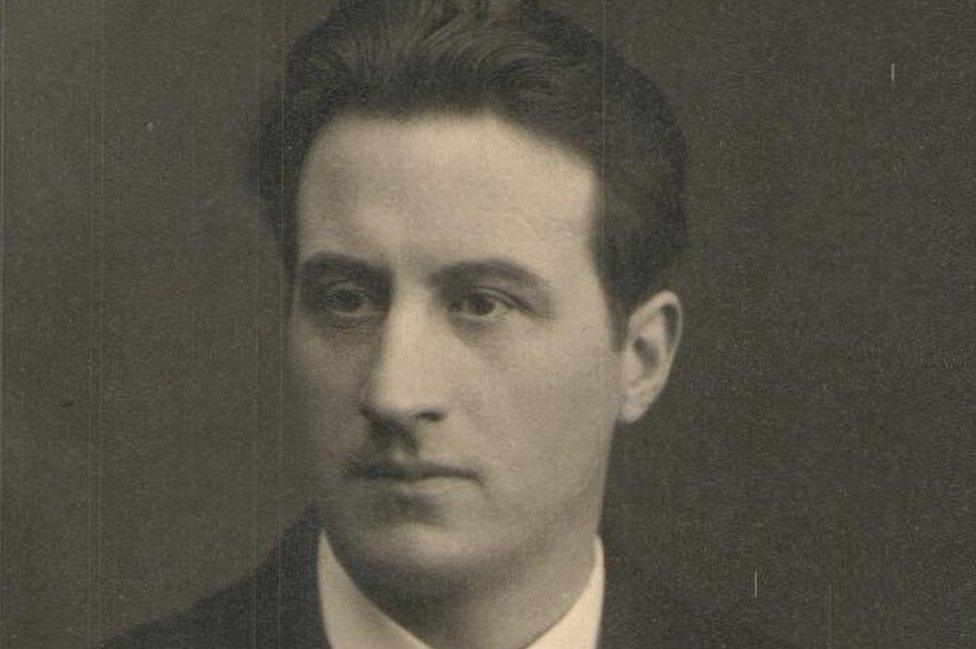
John Collinson returned to Australia in 1940, and seemingly lived a quiet life for his remaining 33 years
Although much of what happened in his life is undocumented, it is known that Collinson had legal troubles in London.
He sued actor and broadcaster Robert Adams for £35 in unpaid singing lessons, but Adams made a counter-claim alleging Collinson had purported to be a casting agent who could get him a part in a film.
Collinson lost and had to pay Adams' legal costs.
There were newspaper reports of Collinson performing up until his return to Australia in 1940.
After this point, information about him is sparse.
According to the NFSA, there was an announcement that in 1940 he was in Fremantle, Western Australia, where he wanted to set up a performing arts school - although there is no record of this actually happening.
Records found in Broome, Western Australia, indicate Collinson was a churchwarden when he died in 1973 aged 81.
It was an obscure death for a man responsible for making the first recording of a song that helped to define a nation.
John Collinson's story will be told on BBC Inside Out North East & Cumbria on BBC One at 19:30 on Monday 19 November.